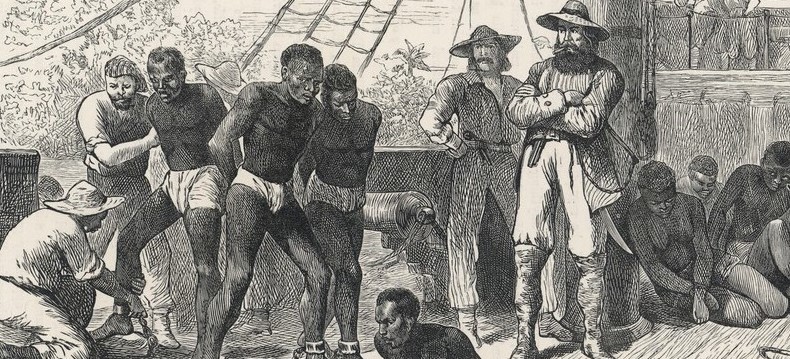
From Portuguese traders to British rule, Ghana’s Gold Coast saw centuries of European rivalry, trade, and colonization that shaped its history.
European Arrival and Colonization: From the Portuguese to British Rule in the Gold Coast
The story of Ghana’s encounter with Europe is one marked by trade, cultural exchange, conflict, and ultimately colonization. For centuries, the region that would later become known as the Gold Coast was a vibrant hub of kingdoms, trade routes, and cultural life. Its abundant natural resources, particularly gold, attracted European powers who saw in it an opportunity to enrich their empires. What began as trade would eventually evolve into control, as the Portuguese, Dutch, and finally the British left their imprint on Ghana’s history.
The Arrival of the Portuguese
The Portuguese were the first Europeans to arrive on the shores of the Gold Coast in 1471. Drawn by the stories of immense wealth in gold, they quickly established trading posts along the coast. In 1482, they constructed Elmina Castle, one of the oldest European buildings in sub-Saharan Africa. Initially, trade revolved around gold, ivory, and spices, with local rulers engaging in mutually beneficial exchanges.
Over time, however, the nature of trade shifted. By the 16th century, the Portuguese had become heavily involved in the trans-Atlantic slave trade, using forts like Elmina as centers for capturing and shipping enslaved Africans across the ocean. This tragic shift had devastating effects on local communities, tearing families apart and altering the social fabric of the region.
The Dutch Takeover
In the 17th century, competition among European powers intensified. The Dutch, rising as a dominant naval force, challenged Portuguese control on the Gold Coast. In 1637, the Dutch captured Elmina Castle from the Portuguese, marking a decisive victory that gave them dominance in the region. Over the next century, they expanded their control by seizing other forts and trade routes.
The Dutch West India Company established a strong commercial presence, and the Gold Coast became an important part of their global trading empire. Like the Portuguese, they were deeply engaged in the slave trade, exporting tens of thousands of Africans to the Americas. However, the Dutch period also saw the continuation of gold exports, as the mineral remained a prized commodity in Europe.
The British Consolidation of Power
While the Dutch were dominant in the 17th century, the British gradually emerged as the most powerful European force on the Gold Coast. Initially operating through private merchants, the British expanded their foothold by building forts and strengthening ties with local rulers. By the 19th century, Britain had surpassed its rivals and gained control of most of the coastal forts, including Cape Coast Castle, which became the administrative center of their operations.
The abolition of the slave trade in the early 19th century changed the dynamics of European presence on the Gold Coast. Britain officially ended its participation in the slave trade in 1807 and gradually shifted its economic interests toward legitimate trade, especially in palm oil, cocoa, and timber. But beyond commerce, Britain’s ambitions expanded into political dominance.
Through a series of wars and treaties, particularly with the powerful Ashanti Kingdom, the British consolidated their control over the region. By 1874, after defeating the Ashanti in the Third Anglo-Ashanti War, Britain formally declared the Gold Coast a crown colony. This marked the beginning of direct colonial rule, where traditional authority was weakened, and British officials governed much of the territory.
Impact on Local Societies
European colonization brought profound changes to the Gold Coast. On one hand, the introduction of new crops, goods, and ideas reshaped local economies and societies. On the other, the devastating legacy of the slave trade left deep scars, depopulating entire regions and disrupting traditional structures. Under British rule, Western-style education, infrastructure, and governance systems were introduced, but these developments were often aimed at serving colonial interests rather than uplifting local communities.
Cultural and political tensions grew as Ghanaians resisted colonial dominance. Over time, these tensions would fuel nationalist movements that eventually led to independence in 1957.
Conclusion
The arrival and eventual colonization of the Gold Coast by Europeans was a turning point in Ghana’s history. From the Portuguese adventurers of the 15th century to the Dutch traders of the 17th century, and finally the British colonial rulers of the 19th century, each left a mark on the land and its people. While their presence brought new trade opportunities, it also introduced centuries of exploitation, conflict, and foreign domination. Today, castles like Elmina and Cape Coast stand as enduring reminders of this complex history—sites of both cultural memory and painful reflection.
RECOMMENDED ARTICLES
- Kwafie Festival: Preserving Heritage and Culture in Bono
- Akan Day Names: Identity in Every Birth
- Dr. J.B. Danquah: Ghana’s Freedom Fighter
- Damba Festival: Celebrating Northern Ghana’s Rich Cultural Heritage
USEFUL LINKS
